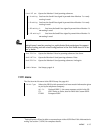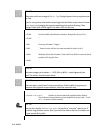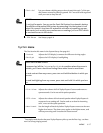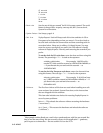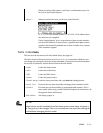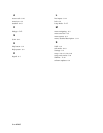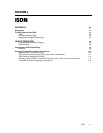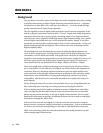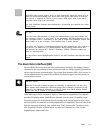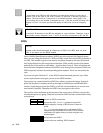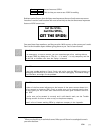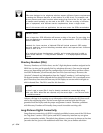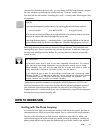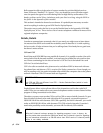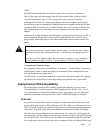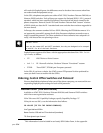
ISDN 7-3
i
ISDN TIP!
While ISDN uses existing copper wires, its high frequencies mean the signal isnÕt as
robust as conventional analog over those wires. How much cable there is from the
telco switch or repeater is critical: in most cases, ISDN wonÕt work if the site is
more than three miles from the switch.
Your local telephone company must determine if a particular site qualifies on a case-
by-case basis.
h
HOT TIP!
Since the total cable distance is critical, the additional wiring you add between the
telco interface (often in a Òwire roomÓ in the basement) and ZephyrExpress can dis-
able a marginal circuit... particularly in the case of large office buildings, arenas, and
concert halls. As a rule of thumb, a few hundred feet is usually benign.
If in doubt, use Category 5 unshielded twisted-pair wire between the telco interface
and the NT1 (or built-in NT1 in ZephyrExpress). While ordinary phone wires may
work between an external NT1 and an S interface, 10Base-T Ethernet cables are
better at rejecting noise.
As a last resort, move ZephyrExpress closer to the telco interface and pipe the audio
instead.
The Basic Rate Interface (BRI)
On one ISDN BRI circuit, there are three simultaneous channels: Two 64kbps “bearer”
channels for the transmission of user information and one 16kbps signaling channel for
call set-up and status communication. This is Basic Rate Interface (BRI), 2B+D service. It
can be implemented over most of the millions of standard copper two-wire phone cir-
cuits already in service.
?
CURIOSITY NOTE!
While the D channel is always present for signaling, it theoretically can also carry
usersÕ packet data connections. ISDN lines where the D channel is restricted to sig-
naling only are
sometimes
referred to as 2B+0D rather than 2B+D service. Packet
service over the D channel is not widely available.
ISDN BRIs are perfectly matched to Zephyr’s transmission capabilities. One channel
provides FM quality mono, while the two channels can carry near-CD quality stereo.
From the perspective of telephone network routing, each channel appears to be a sepa-
rate line with its own number and independent dial-out capabilities. Since each has to be
dialed or answered separately, they appear to be “lines” to users also. To reduce confu-
sion (hopefully) for non-technical users, we refer to a B channel as a “line” on the
ZephyrExpress menus and LEDs.



